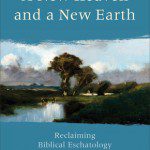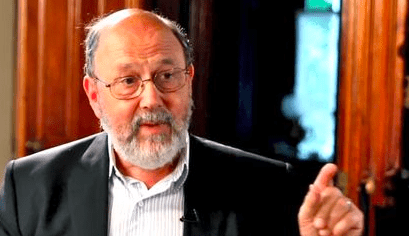 That’s what our Creed, the Nicene Creed, leads us to confess weekly (if we are in that sort of segment of the church). Notice what we confess: “We believe in … the life of the age to come.” We believe life has the final word, not death; we look death in the eye and through death into life, endless and boundless. The Age to Come has a supporting line in the Creed that says this: “… is coming again with glory to judge the living and the dead, whose kingdom will not end.”
That’s what our Creed, the Nicene Creed, leads us to confess weekly (if we are in that sort of segment of the church). Notice what we confess: “We believe in … the life of the age to come.” We believe life has the final word, not death; we look death in the eye and through death into life, endless and boundless. The Age to Come has a supporting line in the Creed that says this: “… is coming again with glory to judge the living and the dead, whose kingdom will not end.”
Do you believe in a (literal) millennium? Or do you think it is a “symbol”? If so, of what?
But Ronald Heine, in the final chapter in his excellent primer Classical Christian Doctrine, sketches in his final chapter the “millennium.” Why? Because it is a point of contention in the church and deserves discussion. Resurrection, judgment, and the saints in the millennium for 1000 years (that’s what “millennium” means).
Bible: the only place we see a millennium is Revelation 20. Here are the verses:
Rev. 20:1 And I saw an angel coming down out of heaven, having the key to the Abyss and holding in his hand a great chain. 2 He seized the dragon, that ancient serpent, who is the devil, or Satan, and bound him for a thousand years. 3 He threw him into the Abyss, and locked and sealed it over him, to keep him from deceiving the nations anymore until the thousand years were ended. After that, he must be set free for a short time.
Rev. 20:4 I saw thrones on which were seated those who had been given authority to judge. And I saw the souls of those who had been beheaded because of their testimony about Jesus and because of the word of God. They had not worshiped the beast or its image and had not received its mark on their foreheads or their hands. They came to life and reigned with Christ a thousand years. 5 (The rest of the dead did not come to life until the thousand years were ended.) This is the first resurrection. 6 Blessed and holy are those who share in the first resurrection. The second death has no power over them, but they will be priests of God and of Christ and will reign with him for a thousand years.
Rev. 20:7 When the thousand years are over, Satan will be released from his prison…
Heine shows how Rev 20 was combined with texts like Psalm 90:4 and the seven days of creation to fill in ideas, but the big idea was that the millennium is to be a time of peace, fertility, renewal of Jerusalem, and a new temple. In addition, Jewish texts — like 1 and 2 Enoch — were mined for more information, or the information there passed into Christian thinking too.
Papias was an early witness to the millennium. So, too, was Irenaeus, who sees a renewed earth. For Irenaeus it is designed to accustom saints for the glory of God, ie a time of “disciplining for incorruption.” Then time passes into eternity. Justin Martyr fits into this kind of thinking about the millennium. Tertullian, too; and Hippolytus. Mostly these theologians enlargen what is seen in Revelation 20.
But some denied a literal millennium. Like Origen who thought this kind of thinking was too earthy and fleshy. Dionysius, bishop of Alexandria, also countered millennium thinking by saying Revelation is not to be interpreted literally. Ambrose saw the millennium as a kind of purgatory. Tyconius thought it referred to the church age. Augustine’s view seems similar to Irenaeus at one time but later seems to be more like Tyconius.
No one was denounced as a heretic on how they interpreted the millennium. Most of us have followed suit.















